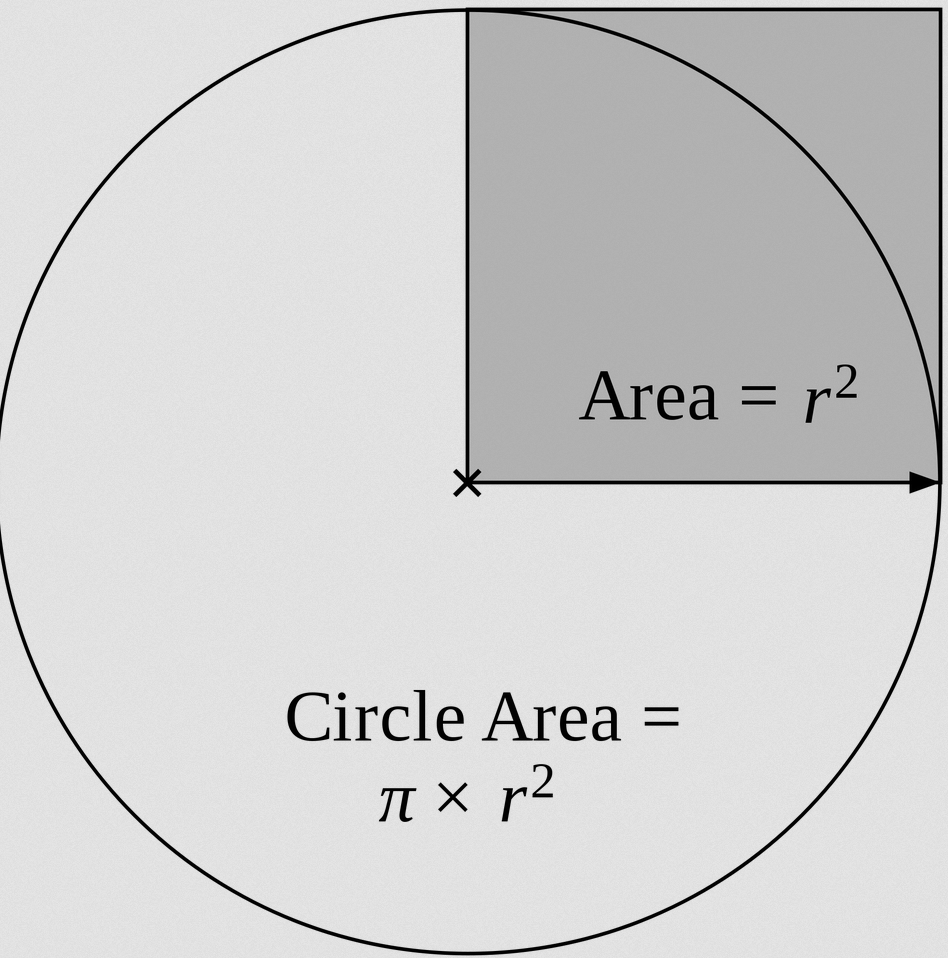General Form of a Circle
Instructions: Use this fraction calculator to compute the general form of a circle, showing all the steps. Please type in the radius and the coordinates of the center in the form below.
More about the general form of a circle
This calculator will allow you compute the general form of a circle, showing all the steps. All you need to provide is the radius and the center of the circle. Any valid numeric expressions are accepted (Ex: 2, or a fraction like 3/4, etc). The only restriction is that the radius need to be positive.
Once you provide valid information needed to define the circle, you can click on "Calculate", and all the steps of the process will be shown for you.
The process is often direct: to calculate the equation of a circle, you start with the radius and the center and get the standard equation of circle. Then, you expand the terms and get it in its general or expanded form.

What is the general form of a circle formula?
The general form formula of a circle is just what the name says, it involves having a general quadratic term in x and y, with the restriction that the quadratic coefficient must be equal to 1 (otherwise, if there not one but equal, you can divide by it, but if they are not equal, then it won't be a circle, but an ellipse). The formula is:
\[\displaystyle x^2 + y^2 + ax + by + c = 0 \]What are the steps for finding the general form circle?
- Step 1: Identify the the provided info. If you have the radius and center, you can directly get the standard form
- Step 2: Once you have the standard form circle, you simply expand all terms, and group term by term
- Step 3: If the coefficients multiplying x^2 and y^2 are not 1, see if they are the same. If they are, divide both sides of the equation by it. If not, then it is not a circle
This process is actually simpler than going the other way around via completing the square. Here you just need to expand and group.
General equation of circle and radius
Naturally, from the general form circle you can trace it back to the standard form circle and know the radius and center, but the process may require some algebraic work.
It truly depends on the circumstances, you don't necessarily need to pass from general to standard form. Normally, when solving equation, there is no need for such conversion, for example.
Why would you use general form circles?
Granted, general form circles will not tell you in an snapshot the radius and the center, but for one, the general form is a typical way circle equations appear in applications.
So then, you will sometimes just use it to solve equations and perhaps maximization problems, and often times is all you need to know about the circle, without passing through knowing the radius or center.

Example: Calculating the general form circle
Calculate the equation of a circle with center (2, 3) and radius 2/3 in general form.
Solution:We need to find the standard form of a circle, where the provided radius is \(r = \displaystyle \frac{2}{3}\), and the center that has been provided is \((\displaystyle 2, 3)\).
The equation of the circle in standard form has the following structure:
\[\displaystyle (x-x_0)^2 + (y-y_0)^2 = r^2 \]where \(x_0\) and \(y_0\) are the corresponding x and y coordinates of the center, and \(r\) is the radius. Therefore, all we need to do in order to fully determine the standard form of the circle is to clearly identify the center and radius, and plug them into the above formula.
In this case, from the information provided we already know that \(x_0 = \displaystyle 2\) and \(y_0 = \displaystyle 3\), and \(r = \frac{2}{3}\). Plugging this in we obtain:
\[\displaystyle (x-x_0)^2 + (y-y_0)^2 = r^2 \] \[\Rightarrow \displaystyle \left(x-2\right)^2+\left(y-3\right)^2=\left(\frac{2}{3}\right)^2 \] \[\Rightarrow \displaystyle \left(x-2\right)^2+\left(y-3\right)^2=\frac{4}{9} \]Now, we pass the constant that is on the right hand side to the left with negative sign and we simplify. The following is obtained:
Therefore, we find from the above simplification that the equation of the circle in general form is:
\[\displaystyle x^2+y^2-4x-6y+\frac{113}{9} = 0\]This concludes the calculation. We have found that the equation of the circle in standard form is \(\displaystyle \left(x-2\right)^2+\left(y-3\right)^2=\frac{4}{9}\). Also, it was found that the general form of the circle in this case is \(\displaystyle x^2+y^2-4x-6y+\frac{113}{9} = 0\)
Example: General form circle calculator
Find the equation of a circle in general form with center at the origin and radius r = 4.
Solution:We need to find the standard form of a circle first, where the provided radius is \(r = \displaystyle 4\), and the center that has been provided is \((\displaystyle 0, 0)\).The equation of the circle in standard form has the following structure:
\[\displaystyle (x-x_0)^2 + (y-y_0)^2 = r^2 \]where \(x_0\) and \(y_0\) are the corresponding x and y coordinates of the center, and \(r\) is the radius. Therefore, all we need to do in order to fully determine the standard form of the circle is to clearly identify the center and radius, and plug them into the above formula.
In this case, from the information provided we already know that \(x_0 = \displaystyle 0\) and \(y_0 = \displaystyle 0\), and \(r = 4\). Plugging this in we obtain:
\[\displaystyle (x-x_0)^2 + (y-y_0)^2 = r^2 \] \[\Rightarrow \displaystyle x^2+y^2=4^2 \] \[\Rightarrow \displaystyle x^2+y^2=16 \]Now, when passing the constant that is on the right hand side to the left with negative sign we get directly the general form of the circle:
\[\displaystyle x^2+y^2-16 = 0\]This concludes the calculation. We have found that the equation of the circle in standard form is \(\displaystyle x^2+y^2=16\). Also, it was found that the general form of the circle in this case is \(\displaystyle x^2+y^2-16 = 0\).
More circle calculators
There are many other circle calculators that may be of interest. You can compute the area of a circle and its circumference, as the most basic property of circles.
Also, you can go from diameter to circumference or circumference to diameter, depending on what kind of information you have provided. One interesting fact is that for a lot of circle calculations, you don't need to calculate the equation of the circle.


